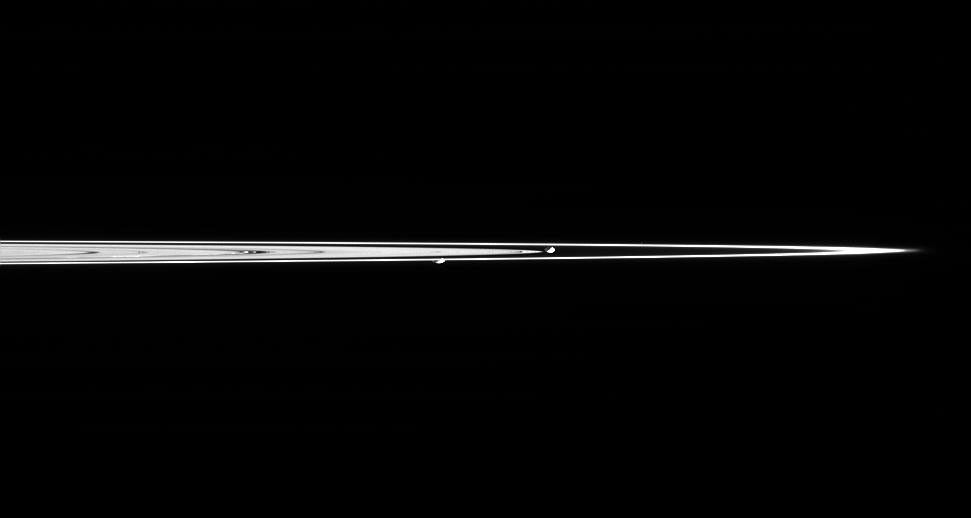F Ring Shepherds
| PIA Number | PIA07544 |
|---|---|
| Language |
|
Saturn's moons Prometheus and Pandora are captured here in a single image taken from less than a degree above the dark side of Saturn's rings. Pandora is on the right, and Prometheus is on the left. Prometheus is 102 kilometers (63 miles) across. Pandora is 84 kilometers (52 miles) across.
The two moons are separated by about 69,000 kilometers (43,000 miles) in this view.
The F ring, extending farthest to the right, contains a great deal of fine, icy material that is more the size of dust than the boulders thought to comprise the dense B ring. These tiny particles are particularly bright from this viewing geometry, especially at right near the ansa, or edge.
At left of center, a couple of ringlets within the Encke gap (325 kilometers, or 200 miles wide) can also be easily seen due to their fine dust-sized material. The other dark features in the rings are density waves and bending waves.
The image was taken in visible light with the Cassini spacecraft narrow-angle camera on Feb. 20, 2005, when Cassini was a mean distance of 1.85 million kilometers (1.15 million miles) from the moons. The image scale is about 11 kilometers (7 miles) per pixel on both moons.
The Cassini-Huygens mission is a cooperative project of NASA, the European Space Agency and the Italian Space Agency. The Jet Propulsion Laboratory, a division of the California Institute of Technology in Pasadena, manages the mission for NASA's Science Mission Directorate, Washington, D.C. The Cassini orbiter and its two onboard cameras were designed, developed and assembled at JPL. The imaging team is based at the Space Science Institute, Boulder, Colo.
For more information about the Cassini-Huygens mission visit http://saturn.jpl.nasa.gov . The Cassini imaging team homepage is at http://ciclops.org .
Credit: NASA/JPL/Space Science Institute

























